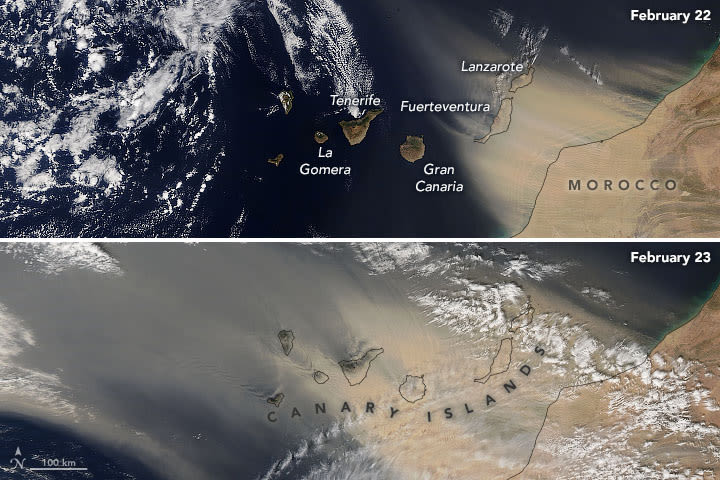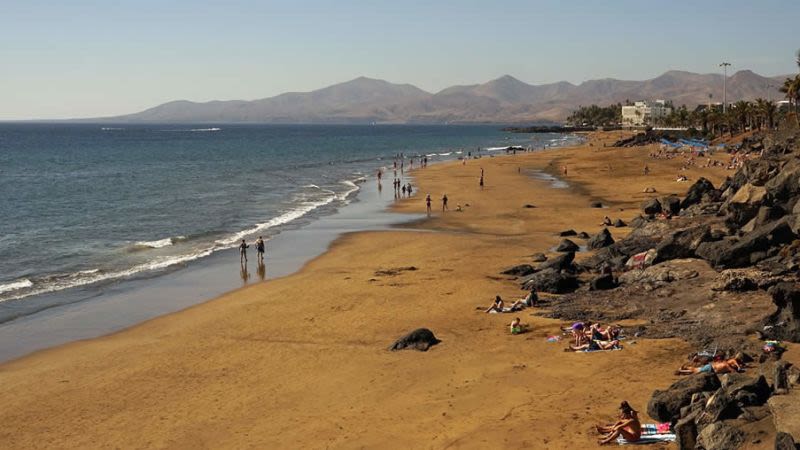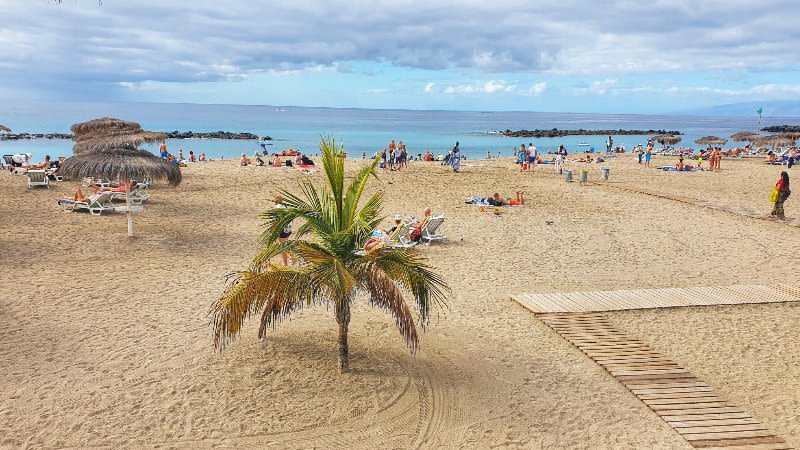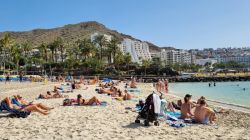Calima in the Canary Islands - What is it and how does it affect you?

Did you know that North Africa accounts for approximately 55% of global dust emissions? And due to their proximity to the Saharan coast, the Canary Islands sometimes suffer from a phenomenon which is known locally as La Calima, when a layer of Saharan dust covers the islands, affecting air quality and visibility.
- What is a calima?
- How does the Saharan Dust get to the Canary Islands?
- The connection between the trade winds and the calima in the Canary Islands
- When is calima more frequent in the Canary Islands?
- What happens during a calima episode in the Canary Islands?
- What should you do during a calima episode in the Canary Islands?
- Does the calima affect all the Canary Islands?
- How long does a calima episode last?
In the Canary Islands, two observation sites have carried out dust measurements: Izaña (Tenerife) since 1987 and Pico de la Gorra (Gran Canaria) since 1996.
What is a calima?
The phenomenon known as a calima is what the locals call when a layer of dust from the Sahara comes and covers the islands, making it hard to see or breathe, affecting people with cardiovascular problems or respiratory problems.
How does the Saharan Dust get to the Canary Islands?
The Canary Islands are just one of the first areas affected by the layer of Saharan dust, which travels much further, reaching areas of the Caribbean, Central America and South America, especially in the summer months.
According to scientists, there are large seasonal and spatial variations in mineral dust concentration over the Atlantic Ocean, greatly affected by the seasonal latitudinal shift of the Intertropical Convergence Zone (ITCZ).
During the summer, the ITCZ shifts northwards over the northwestern part of the African continent, creating a thermal low over the surface of the African continent. This causes the North African high ‐ pressure system to be located at a higher altitude and consequently, dust transport occurs high in the atmosphere within the so-called Saharan Air Layer (SAL).
The connection between the trade winds and the calima in the Canary Islands
Dust transport is controlled by the African easterly jet and occurs between a height of 3 km and 6 km when the dust layer is lifted above the Trade Wind Inversion layer.
In the Canary Islands, the location of the Trade Wind Inversion layer is greatly influenced by seasonal patterns, occurring in summer between 770 m asl and 1380 m asl with an average thickness of about 560 m, while in winter the layer is found at higher altitude (1360 m asl to 1850 m asl) and with a reduced average thickness of about 360 m.
When is calima more frequent in the Canary Islands?
Although the calima is more frequent during the winter months, it can also happen during the summer season.
The highest mineral dust concentrations are registered during winter and early spring in the Canary Islands and during the late autumn and winter in Cape Verde.
According to regional dust models (e.g. Schepanski et al., 2009), the Sahara produces a larger amount of dust during summer, but the dust is transported at higher altitudes of up to 10 km within the Saharan Air Layer.
In winter the dust is transported along with the northeast trade winds at far lower altitudes.
What happens during a calima episode in the Canary Islands?

The Saharan dust storms usually bring with them very low visibility and the entire landscape seems immersed into a haze and there is dust everywhere (you can observe the amount of dust on everything that is left outside, from cars to outdoor furniture).
According to specialists, the haze does not only bring dust but is also accompanied by a high concentration of toxins from thermal power plants, petrochemicals and mining plants in neighboring countries to the Saharan desert such as Algeria and Morocco.
These toxins exacerbate health problems for people who breathe this air, especially those suffering from some respiratory or cardiological pathologies. These particles enter the airways, reach the bronchi and can cause inflammatory processes.
When there's a calima in the Canary Islands, there's usually a big shift in temperature, and most of the time the temperature skyrockets at unusual levels, making it even harder to breathe.
There are some visitors who are happy with this increase in temperatures, especially if it's happening during the winter months but keep in mind that the air quality drops during that time, so you should not spend that much time outside.
What should you do during a calima episode in the Canary Islands?
How can you protect yourself from breathing the harmful dust if this happens while you're visiting the Canary Islands?
The authorities usually advise the population to stay inside as much as possible, especially if it's a severe episode, like the one back in February 2020 and this recommendation is especially valid for people who suffer from respiratory problems like asthma.
You should also avoid exercising while you're outside so that you can avoid breathing in even more dust.
Does the calima affect all the Canary Islands?

In general yes, all the islands in the archipelago are susceptible to the calima episodes.
So there can be a calima in Tenerife, as well as a calima in Gran Canaria or Fuerteventura and Lanzarote, plus the rest of the smaller islands. Depending on the episode and the direction of the winds, one part of the archipelago can be more affected than the other. Sometimes it happens that the calima is more severe in Lanzarote and Fuerteventura, and other times it happens to be more severe in Tenerife or Gran Canaria.
For example in February 2020, which is considered one of the most severe episodes of Saharan dust reaching the Canary Islands, the airport in Gran Canaria had to be closed for several hours because the visibility was so low that no plane could land or take off safely.
Calima in Tenerife
The image above with Mt. Teide is from back in February 2019, during a calima episode in Tenerife. We went up to the mountains, hoping that it might be better than down by the coast, but even Teide seems engulfed by the Sahara dust and the visibility was very low compared to a normal day. Keep in mind that this is a giant volcano visible from many places on the island, so it was very unusual to see it covered like that in a haze.
How long does a calima episode last?
Calima usually lasts for a few days, usually 2-3 days, sometimes more. After that, the sky usually starts to clear up and the visibility improves gradually.
Plan your trip:
Resources: Gelado‐Caballero, M. D. 2015. Saharan dust inputs to the Northeast Atlantic. In: Oceanographic and biological features in the Canary Current Large Marine Ecosystem. Valdés, L. and Déniz‐González, I. (eds). IOC‐UNESCO, Paris. IOC Technical Series, No. 115, pp. 53‐61. URI: http://hdl.handle.net/1834/9176
































